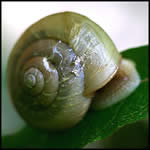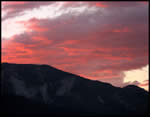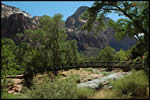Gary's Parries 13/08/06
 This week’s Gary’s Parries topics are:
This week’s Gary’s Parries topics are:
1. DSLR Dynamic Range Needs Improvement
2. Digital Shutter Lag Versus 35mm
3. Newbie Seeks Camera That Rocks
[Note: Here are the answers to last week’s questions. I am still one week behind, so if you recently submitted a question, you should receive an answer by next week. Thank you for your patience. – Gary]
Introducing this week’s Gary’s Parries column. Everything you always wanted to know about digital cameras, but were afraid to ask. No question too difficult, or too easy. As a Senior Principal Software Engineer, and a former Assistant Professor of Computer Information Systems, as well as a recording studio owner/operator, inventor, and now, a digital camera enthusiast, GARY has more digital camera knowledge in his entire brain than most people have in their little finger. In the unlikely event that GARY would not know the answer to your question, he will answer it anyway, true to the spirit of the word “Parries”, a fencing term which, in this context, implies “cleverly evasive answers”. So let your imagination run wild. Email all your nagging digital camera questions to: [email protected] , and then, En Garde!
You may also attach to your email an ORIGINAL PHOTO of your choosing. A preview of the photo will be displayed with your question, and a full-sized version will be just a click away. No personal information will be published with your question unless you specifically include it in the text or attached photo of your email, which may be further edited for grammar, content, or other reasons.
***
*** QUESTION 1—- DSLR DYNAMIC RANGE NEEDS IMPROVEMENT
***
Why do camera companies seem uninterested in improving the dynamic range of their DSLRs? Would dynamic range improvements be a product of software execution or sensor construction, or both? Do you see dynamic range improvements for DSLRs coming in the near future or will the camera makers continue to tout pixel count as the Holy Grail? What effect does dynamic range have on image noise? It seems to me that dynamic range is the area where the most improvement is needed today. It may be improving but, if it is, the camera companies sure aren’t advertising it, are they? But that’s just my opinion.
Thanks,
Ricky
***
*** ANSWER 1
***
Agreed, Ricky, digital camera companies have consistently paid more attention to the number of megapixels in their cameras than to dynamic range. And the two concerns are mutually exclusive. Packing more pixels into the same sized CCD yields smaller pixels, and smaller pixels have lower dynamic range than larger pixels.
There is, however, one notable exception to companies paying more attention to pixel counts, namely, Fuji, which has implemented their proprietary Super CCD SR image sensor with extended dynamic range. With the Fuji CCD, each photosite consists of two photodiodes, an ‘S’ and an ‘R’, whereby the larger ‘S’ photodiode has normal sensitivity to light, and the smaller ‘R’ photodiode has reduced sensitivity to light. The signals from these two photodiodes are then mixed together in such a way so that when the ‘S’ photodiode becomes saturated from too much light, the ‘R’ photodiode still has plenty of headroom left.
The main drawback of the Super CCD SR is its increased image noise due to the small size of the ‘R’ pixels. Another drawback is that, while the extended dynamic range does preserve the highlight detail of the image, it does nothing to enhance the image’s shadow detail. A workaround is to overexpose the image one or two stops in order to enhance the shadow detail captured by the normal-sensitivity ‘S’ photodiodes, while letting the reduced-sensitivity ‘R’ photodiodes do their thing to prevent the highlight detail from being blown out.
There are a number of hardware and software techniques that attempt to ‘optimize’ the dynamic range of a CCD rather than ‘extend’ it. Essentially, all this does is process the CCD’s output to expand the image’s shadow areas and compress its highlight areas, thus making the most of the CCD’s limited dynamic range. The Sony Alpha DSLR-A100 is one example of a camera that optimizes dynamic range with built-in hardware. Nikon, HP, and Kodak digicams have built-in software to do the same. The major drawback of dynamic range optimization is increased image noise in the expanded shadow areas.
New techniques are currently being developed to extend the dynamic range capabilities of image sensors. CMOS image sensor technology is one promising example. Due to the ease of CMOS circuit fabrication, auxiliary circuits can be added to the image sensor’s photodetection circuitry to measure the incoming light at each photosite, and to then individually increase or decrease the sensitivity of each photosite accordingly.
Another technique that looks promising places a photochromatic filter (the material used in eyeglass lenses to make them self-darkening) directly in front of the CCD to regulate the light that gets through to each photosite. The advantage of this technique is that it can be used with today’s CCDs, since it actually does not need to extend the dynamic range of a CCD; rather, it reduces the dynamic range of the image to fit within the limited dynamic range of a current CCD.
When digital cameras were first introduced, their most obvious shortcoming was their limited image resolution compared to that of film. Today, with 10+ megapixel CCDs commonplace, this is no longer the case. Ricky, I think you hit the nail right on the head when you said that the time has come for digital camera manufacturers to pay more attention to the dynamic range of their CCDs.
***
*** QUESTION 2—- DIGITAL SHUTTER LAG VERSUS 35MM
***
 I have been trying to convince my friend that shutter lag exists in digital cameras. He is an avid 35mm photographer and is considering changing, or is at least having one foot in each camp, but I am concerned that he will be disappointed due to time lag as opposed to the 35mm.
I have been trying to convince my friend that shutter lag exists in digital cameras. He is an avid 35mm photographer and is considering changing, or is at least having one foot in each camp, but I am concerned that he will be disappointed due to time lag as opposed to the 35mm.
I don’t want him to pay good money for a camera and be disappointed in its foibles. Is there a list of cameras and time lags online, or otherwise, as I need to convince him and hopefully help him choose wisely?
Yours faithfully,
Ian Muir
[Note: Photo submitted by Nick in Japan, who used his Canon EOS 20D digital camera, shutter lag and all, to capture this shot. :)]
***
*** ANSWER 2
***
Shutter lag, i.e., the time it takes for a camera to capture an image once you have pressed the shutter release, exists for both film and digital cameras, and there really is not much difference between the two in that regard.
The biggest contribution to shutter lag, whether it be for film or digital, is the time it takes the camera to auto-focus an image. Generally, higher end cameras have faster auto-focusing than lower end cameras; however, the easiest way to beat the AF delay is to pre-focus or manually focus the image.
Once the image is focused, all that remains for the camera to do is flip up the mirror (for SLRs and DSLRs only), select the exposure (for auto, aperture-priority, and shutter-priority modes only), select the white balance (for automatic white balance mode only), and then flush the image buffer (for digital cameras only). Again, higher end cameras will generally perform these operations faster than lower end cameras, and again, this is regardless of whether the cameras are film or digital.
As you can see, when it comes to shutter lag, there really is only one significant difference between film and digital cameras, namely, flushing the image buffer prior to each shot; however, with the speedy processors used in today’s digital cameras, this delay can be greatly minimized.
So, Ian, I would not discourage your ‘friend’ from sticking his foot into the digital camp. If your friend now shoots manually with his 35mm film SLRs, he will get the same quick response shooting manually with a 35mm DSLR of comparable quality. If, on the other hand, your friend wants a digital camera for automatic shooting, then a quality DSLR, or even a good point-and-shoot, should provide excellent results.
If you are concerned about the shutter lag for a specific digital camera, you can Google “shutter lag” (in quotes) and get links to numerous tables listing the delays for a variety of cameras. Be careful with these numbers, however, as they can vary greatly, depending on how they were measured and the shooting conditions under which they were measured. The best thing to do is go to your favorite digital camera review site where they measure shutter lag, and then compare the cameras reviewed by that site.
But shutter lag is not the end of the world. I think Gordon Moat characterized it best in his comment #4 of last week’s column when he said, “The more you get used to any camera, the better you can anticipate what happens between pushing the shutter release and capturing an image. Obviously this is easier with a really short release timing, but not something impossible to overcome in slower cameras.” Thank you, Gordon, for that excellent observation.
***
*** QUESTION 3—- NEWBIE SEEKS CAMERA THAT ROCKS
***
Thanks in advance for your advice. Simple question: I’m going out to Zion National Park at the end of September and wanted to know what kind of digital camera you would recommend to take high quality resolution (even with zoom) photos? End product, I would like the ability to blow up my prints to small poster size if necessary without giving up a lot of resolution. My price range is flexible, but would like to keep it between $200 and $350.
Any advice you can give would be great.
Steve
[Photo submitted by Rob Huberman of ComteQcom.com, who used his Nikon D70 to capture this shot at Zion National Park.]
***
*** ANSWER 3
***
Steve, not such a simple question after all. The answer depends a lot on how you intend to use the camera. If you intend to take the camera out to a sight to shoot the “fantastic rock structures and unbelievable scenic beauty” that Zion National Park has to offer, then a quality bridge camera like the Sony DSC-H5, Canon PowerShot S3 IS, or Panasonic Lumix DMC-FZ30 (the price of which should be coming down now that the FZ50 is available) would be recommended.
However, if you are the type that wants to experience the “backpacking, biking, camping, fishing, four wheeling, hiking, horseback riding, and river running” activities at the park, then a more pocketable camera would be recommended, and possibly even a weatherproof camera, especially if river running is your thing.
There are only a few pocketable weatherproof cameras I would recommend. The Olympus Stylus 710 and 810 are two very good choices. The new (and thus far not reviewed) Pentax Optio W20 also looks like it might be a good choice, and the previous model W10 is definitely a good choice.
If weatherproofing is unessential, that opens up many more possibilities. It is not necessarily true that the higher the megapixels, the better the camera for enlarging its images to poster size. With higher megapixels comes higher image noise, which becomes even more visible with increased print size. The trick is to find a camera that has a balance of high resolution, low noise, and good image quality, all in a pocketable size with a decent zoom. For that I can only recommend the same camera I selected for my wife, namely, the Canon PowerShot SD700 IS.
All of the abovementioned cameras are in the 6 to 8 megapixel range, which should be sufficient for small poster prints. If you want even larger prints, you can always do a bit of resolution enhancement in computer post-processing using the bi-cubic interpolation algorithm, or similar, found in many software image processing applications, including PhotoShop and GraphicConverter.
***
[Column photo “The Photographer” by Brenda LaFleur of Brenda LaFleur Photography.]


